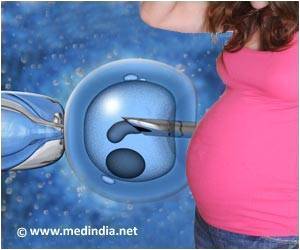The trait that evolved into human female orgasm had an ancestral function in inducing ovulation.

‘Prehistoric women needed to be stimulated in order to release an egg. Orgasm triggered a hormonal surge. This surge aided in ovulation, causing the release of an egg for fertilization and reproduction.’





In a new paper Gunter Wagner, from Yale University in New Haven, Connecticut, and Dr Mihaela Pavlicev of the Centre for Prevention of Preterm Birth at Cincinnati Children’s Hospital argue that the origin of the female orgasm can be traced back deep into our mammalian history.The biologists say that tens of millions of years ago, before primates split off from rodents, females only released eggs when they had intercourse with males. This meant that they evolved a sex-induced hormone surge, a sort of crude precursor to the orgasm, as an incentive to get on and reproduce.
The females of many modern mammal species, from rabbits to alpacas and cats to koalas, still need copulation and this rush of biochemicals to make them ovulate. Over time other species, including humans, gained the ability to get their eggs spontaneously ready to be fertilised. The female orgasm, though, appears to have survived in spite of being effectively useless in evolutionary terms.
Writing in the Journal of Experimental Zoology-Molecular and Developmental Evolution, Dr Pavlicev and Professor Wagner say that when women climax one of the most marked effects they experience is a sudden flood of two hormones, prolactin and oxytocin. This is exactly the kind of chemical surge that triggers ovulation in the mammals that still need to have sex to free up their eggs for reproduction. Why it should have hung around in humans, though, remains an enigma.
It is not even clear what proportion of women have orgasms or how much of the time they do so. In 2009, Elisabeth Lloyd, professor of biology at Indiana University and author of The Case of the Female Orgasm, reviewed the evidence and found that only a quarter consistently climaxed during vaginal intercourse. Between one in ten and one in 20 women have never experienced an orgasm, while one in five seldom has an orgasm during sex. Why they do so at all is a mystery, given that orgasm does not seem to be linked to having more children.
But, says Lloyd, she is yet to be convinced by Wagner and Pavličev’s theory, not least because it does not take into account neurological and muscular aspects of human female orgasm. She adds that very little is known about orgasms in the females of other species.
Instead, Lloyd favours the theory that female orgasms are simply a happy quirk of embryo development. “It is only at eight weeks that there is a surge of male hormones that turns the genitals into male genitals,” she said. While men need to orgasm in order to transfer sperm, women end up with the nerve and muscle tissues for orgasm.
David Puts from Pennsylvania State University said the new theory is plausible although, he stresses, it only looks at the hormonal component of female orgasm.
Other scientists have suggested that the female orgasm helps to bind women emotionally to the men they have sexual intercourse with, increasing the odds that the couple will stay together and bring up children.Yet another theory holds that it developed as a way for females to choose the highest-quality males to father their children.
By tracing these mechanisms of ovulation across the evolutionary tree of mammals, the authors found that so-called “male-induced ovulation” predates spontaneous ovulation, with spontaneous ovulation likely to have arisen in the common ancestor of primates and rodents around 75 million years ago.
That suggests that human female orgasm could have its roots in a mechanism for the release of eggs during sex, a mechanism that became redundant with the evolution of spontaneous ovulation, with female orgasm potentially going on to acquire other roles.
The authors say the theory is backed up by a comparison of the position of the clitoris, which gives rise to orgasms, in different mammals. Species that rely on hormonal surges during sex to ovulate tend to have a clitoris inside or near the female sex canal, making it more likely to be stimulated during sex. But, the authors note, those that ovulate spontaneously have the clitoris further away. A comparative study of female genitalia also revealed that, coincidental with the evolution of spontaneous ovulation, the clitoris was relocated from its ancestral position inside the copulatory canal. This anatomical change made it less likely that the clitoris receives adequate stimulation during intercourse to lead to the neuro-endocrine reflex known in humans as orgasm.That also helps to explain why many women do not have orgasms during sex itself.
But, the new research goes a long way to boosting out understanding of the ancestral form of human female orgasm.
Source-Medindia














